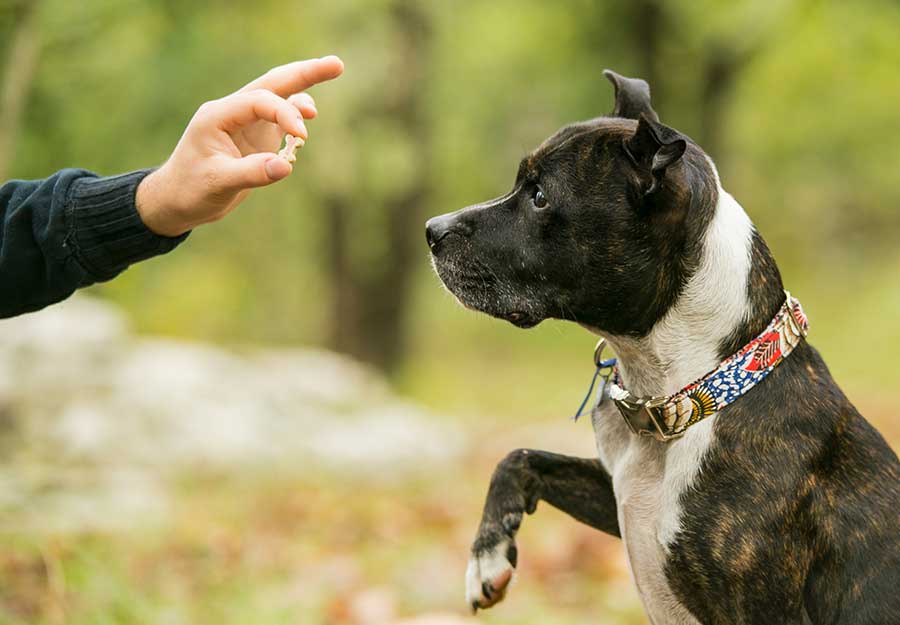Professional Insights on Dog Training Charlotte NC: Change Your Pup Today
Professional Insights on Dog Training Charlotte NC: Change Your Pup Today
Blog Article
The Ultimate Guide to Pet Dog Training: Building a Satisfied, Obedient Family Pet
Effective pet dog training is a complex procedure that pivots on a deep understanding of canine actions and the application of proven techniques. By welcoming favorable support and constant command use, family pet proprietors can grow not just obedience yet likewise a solid, relying on connection with their dogs.

Recognizing Dog Habits
Just how does a pet dog's actions mirror its mental and emotional state? A canine's activities can function as a window into its sensations, needs, and total psychological health. For example, a wagging tail commonly symbolizes joy and exhilaration, while a lowered tail might suggest fear or submission. Similarly, vocalizations such as barking or whining can connect a variety of feelings, from happiness to distress.
Body language additionally plays an important function in recognizing canine actions. A loosened up position and open mouth signal convenience, whereas tense muscular tissues and pinned ears may suggest anxiety or hostility. Observing these signals is crucial for recognizing the origin triggers of a dog's habits, whether it originates from concern, exhilaration, or disappointment.
Furthermore, a canine's interaction with its environment and various other pets can supply insight right into its emotional state. A pet that involves happily with other pets is most likely feeling secure and social, while one that displays avoidance or aggressiveness might be experiencing stress and anxiety or instability. Comprehending these behavioral signs is important for cultivating a solid relationship between the family pet and the proprietor, eventually contributing to the pet dog's emotional wellness and health.
Essential Training Methods
Reliable pet training techniques are crucial for promoting preferable actions and strengthening the bond between a dog and its owner. Utilizing favorable support is one of the most efficient methods, where rewards such as treats, praise, or playtime are provided to enhance preferred behaviors (Dog training). This urges the pet dog to repeat those habits, producing a favorable discovering atmosphere
Consistency is one more critical component in dog training. Commands need to be uniform and clear, and all family participants have to apply the exact same guidelines to prevent confusing the canine. Timing is similarly essential; incentives need to be given right away after the desired behavior to develop a clear link between the action and the benefit.
In addition, brief and interesting training sessions work, as canines have varying interest spans. Go for sessions of 5 to 15 minutes, depending upon the pet's age and energy degree. Integrating play into training can also boost inspiration and satisfaction for both the pet dog and the owner.
Lastly, patience is vital. Pets learn at their own pace, and maintaining a calm attitude will assist minimize irritation, ensuring a favorable training experience. These essential techniques prepared for effective pet training and a harmonious relationship.
Fundamental Commands to Teach

When instructing these commands,Uniformity and favorable support are crucial. Use treats, appreciation, and playtime to compensate your pet's successes. Short, frequent training sessions are much more reliable than long, seldom ones. By instilling these fundamental commands, owners equip their dogs with the abilities required for a unified and well-behaved relationship.
Addressing Usual Behavioral Concerns
Recognizing and dealing with usual behavior issues in dogs is essential for promoting a harmonious relationship between pets and their proprietors. Many pet dogs exhibit actions such as extreme barking, chewing, or aggressiveness, which can originate from anxiousness, dullness, or lack of proper training. Recognizing the source of these actions is the initial step toward reliable treatment.
For example, excessive barking may indicate a demand for attention or a response to environmental stimuli. In such instances, proprietors ought to examine the pet's environment and supply adequate psychological stimulation, such as interactive playthings or regular exercise. Eating can typically be managed by redirecting the habits to ideal chew items and guaranteeing that the dog has sufficient physical activity to lower monotony.
Hostile habits needs mindful handling and might demand specialist training support. It's essential to understand that punishment can aggravate anxiousness and aggression, bring about a cycle of behavioral issues. Rather, emphasis on positive reinforcement methods to award desirable behaviors and reinforce a complacency.
Building a Positive Training Environment
Creating a favorable training environment is fundamental for reinforcing desirable habits in canines and reducing behavior issues. This atmosphere needs to be identified by uniformity, encouragement, and a clear understanding of the training purposes. By developing a routine, pets learn what is expected of them, which helps reduce stress and anxiety and confusion.
Utilizing favorable reinforcement strategies, such as treats, praise, and play, cultivates a feeling of protection and motivation in the canine. Rewarding excellent actions quickly and constantly strengthens the preferred activities, making the training process much more reliable - Dog training. In addition, instructors need to continue to be person and tranquility, as canines are delicate to their handlers' emotions
The training room need to be devoid of distractions to ensure the pet can concentrate on the jobs available. Take into consideration using a quiet area or a safe exterior location. Including playtime and socializing into training sessions advertises a well-shaped approach, boosting the canine's discovering experience.
Ultimately, a favorable training environment nurtures a solid bond between the dog and handler, leading to a loyal, happy pet. By prioritizing this setting, pet dog owners can successfully address behavioral challenges and grow a successful training journey.
Verdict
Efficient dog training relies on a detailed understanding of canine actions and the application of positive reinforcement methods. Adopting these principles ensures a fulfilling training experience for both canines and their owners.
Effective pet training is a complex process that hinges on a deep understanding of canine actions and the application of proven methods. A canine that involves happily with various other pet dogs is most likely sensation social and safe, while one that displays evasion or aggressiveness may be experiencing stress and anxiety or instability.Efficient canine training methods are important for promoting preferable habits and reinforcing the bond in between dog training charlotte nc a dog and its proprietor.Producing a favorable training atmosphere is fundamental for strengthening preferable behaviors in pet dogs and reducing behavioral problems.Effective canine training relies on a thorough understanding of canine actions and the application of positive support techniques.
Report this page